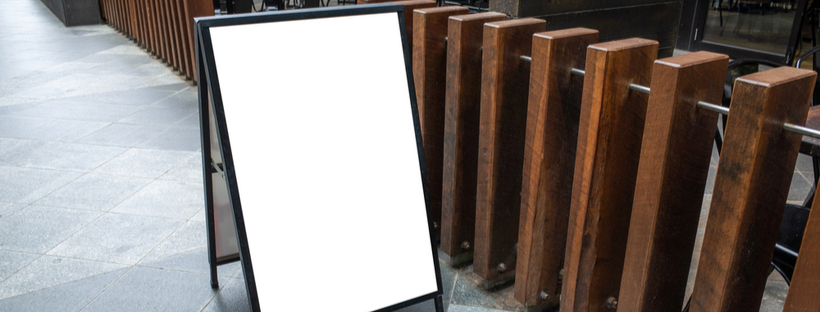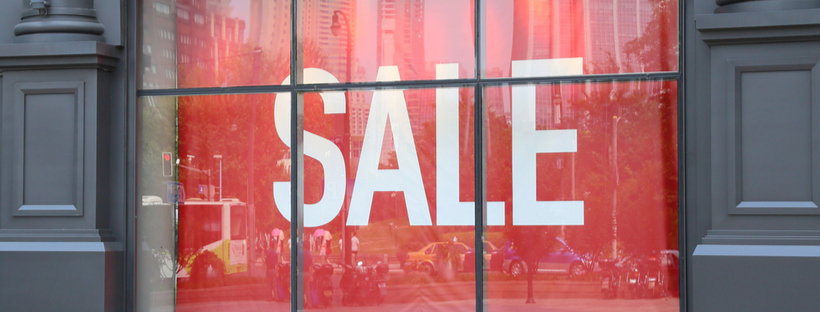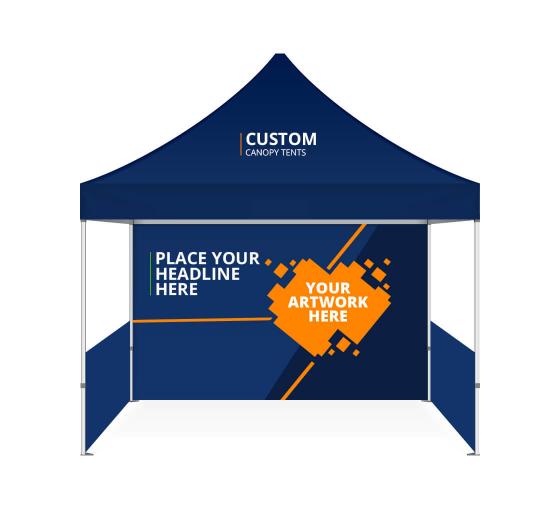If you are looking to advertise your business using banners and signage, it is imperative that you stay informed about seeking permissions and avoiding restricted areas.
For instance, the Chicago administration has permitted businesses to legally use sidewalk signs after receiving a new City of Chicago permit, effective March 1, 2022. Sidewalk signs include A-frame, T-frame, sandwich board, and other self-supporting sign types.
Sidewalk Sign Guidelines in Chicago

Here are a few guidelines that businesses must abide by before installing sidewalk signs in Chicago:
- Businesses can only install one sign per street address.
- The city will provide a permit decal to all approved applicants and have it printed on the sign. There must be a permit decal on all sidewalk signs.
- Signs cannot be taller than 4 feet or larger than 6 square feet in area (per face).
- Signs must only display information about the goods and services available on the premises.
- Sidewalk signs must not hamper the pedestrians and their safety, traffic safety, building entrances, or the aesthetics of the environment.
- Signs are only allowed to be displayed during open business hours. Businesses are required to remove signage from the sidewalk after closing.
Sign Permit: When Do You Need it?

Businesses require a sign permit when installing an off-premise sign.
If a business is installing an on-premise sign, a permit is needed with the following exceptions:
- An interim, on-premise sign created entirely using fabric, paper, vinyl, and similar materials and hung up on a window for less than 60 days. The net signage area in a single window should not cross 25% of the glazing area of said window.
- An on-premise sign coated onto the glass window directly, made from plastic film or any other material, and adhered fully to the window using adhesives or static cling, irrespective of the duration. The total signage space in a single window must not cross 25% of its glazing area.
- Lettering painted straight onto the window glass with a height of fewer than 2 inches will not be counted when measuring the 25% ratio, provided that it is an on-premises sign.
Businesses do not need to obtain a sign permit for an incidental sign that includes an address sign, open/closed sign, entrance/exit sign, restroom sign, or days/hours of operation sign. The signage must not contain any commercial or business name tag or graphic commercial business logo.
Businesses do not require a permit for installing an official sign, warning sign, or public notice authorized by state, federal, or municipal law. Such signs could be a no firearm sign, no smoking sign, consumer rights notice sign, or high voltage sign.
All business owners must consult the Municipal Code and secure a permit before purchasing a sign or installing vinyl banners. This is because not all signage is permitted under the building, zoning, and public way provisions, as per the Municipal Code.
Contractor Listing: Why Do You Need it on a Sign Permit Application?
As a business owner, you can legally install a sign without supervision unless it requires stamped drawings obtained from a licensed architect or structural engineer. Under such conditions, you must list a licensed general contractor when preparing the permit application.
Engineered Drawings

Drawings prepared by a structural engineer or an architect licensed to legally practice in the State of Illinois must be presented with applications to obtain permits before erecting or altering signage that falls into any of these categories:
- Signs that need a roof structure extending over 12 feet from the roof to the structure’s top.
- Signs that need a roof structure if any of its faces exceed 18.27^2 feet in area.
- Signs that go beyond 206 lbs.
- Projecting signs if any of their faces exceed 30.5^2 feet in area.
- Projecting signs with over 50% of the vertical sign dimension above the roofline and with faces that exceed 18.27^2 feet in area.
- Signs installed wholly above a building’s rooftop.
- Signs reinforced from the ground using one or multiple independent structures with a top that crosses over 24 feet above the surrounding grade’s level or the adjoining street level.
- Exterior signs that are not made using solid material, including, but not limited to, fabric, paper, vinyl, cloth, or similar flexible substances, which:
- (i) cross 30.5^2 feet in area or are 24 feet or more above grade, or
- (ii) are secured to a building with channels, brackets, cables, nails, hooks, screws, straps, or any other tool besides a painted wall sign.
Another point to note is that if the installation of the sign, sign structure, or associated lighting requires the involvement of electrical work, you will have to list a registered electrical contractor when preparing your permit application.


 Posted in
Posted in 



